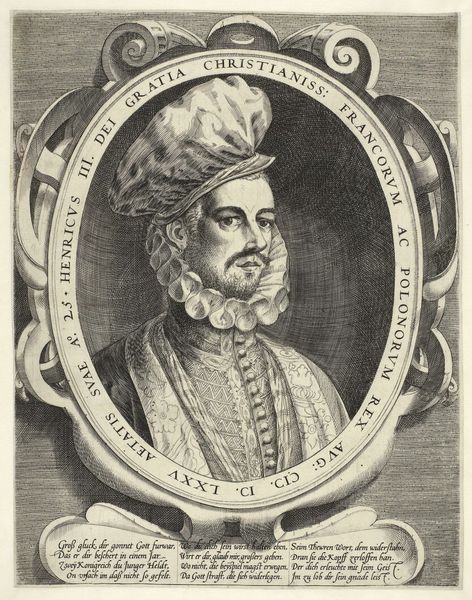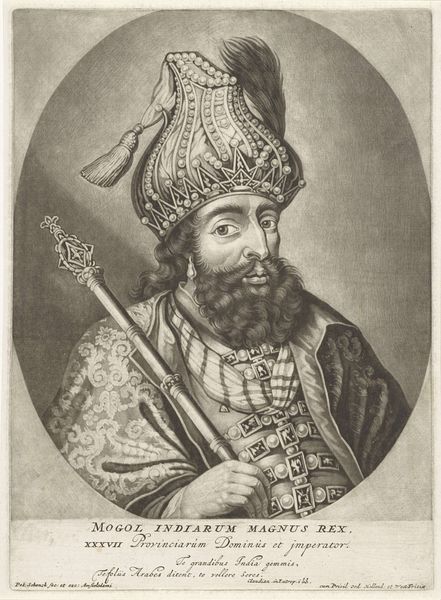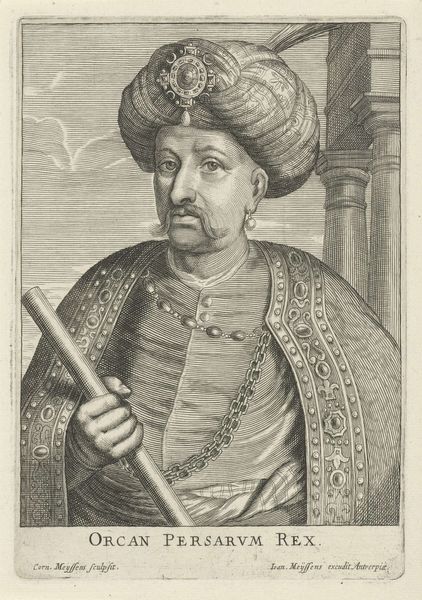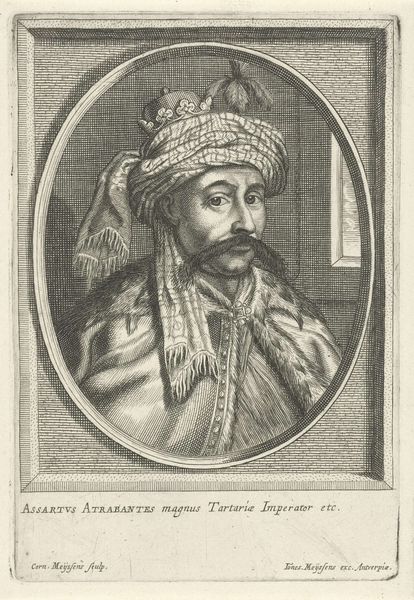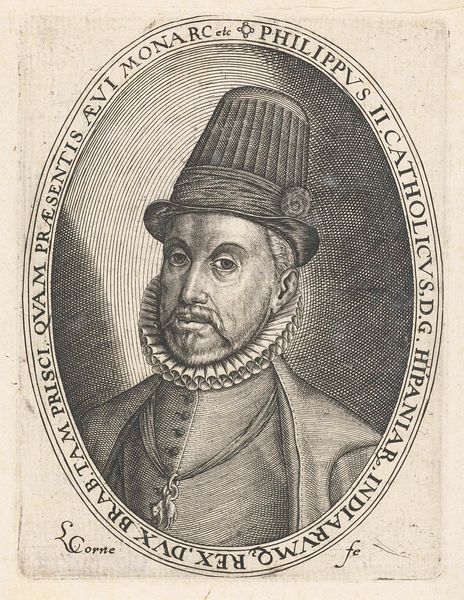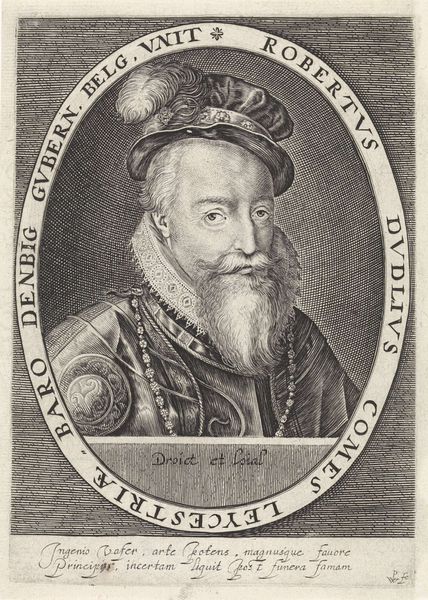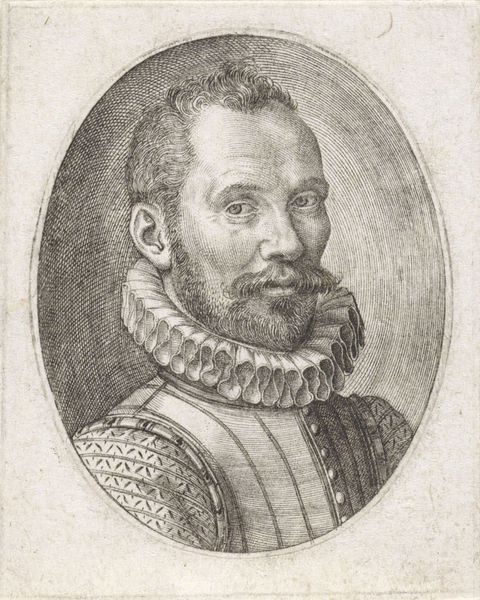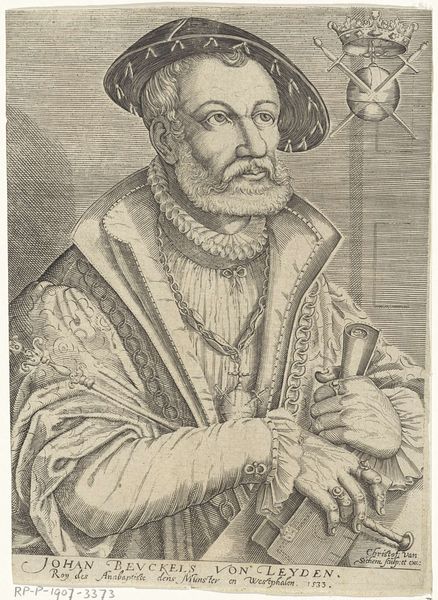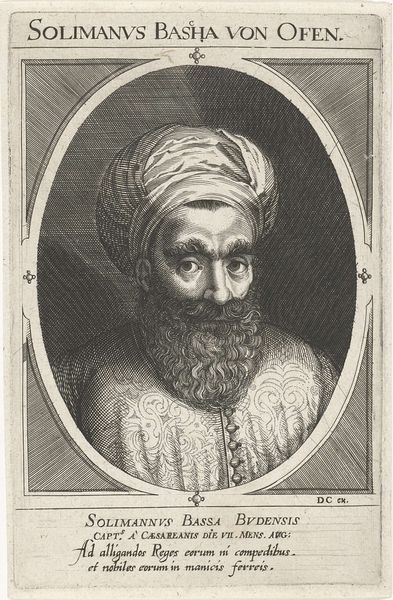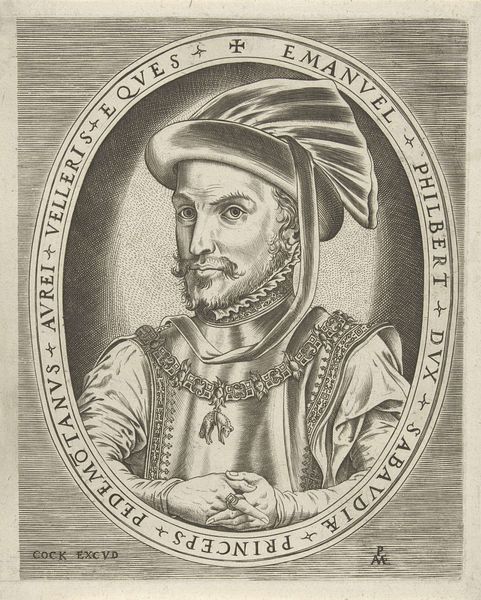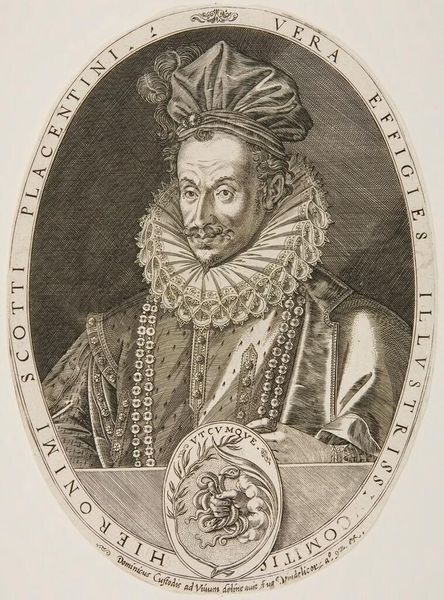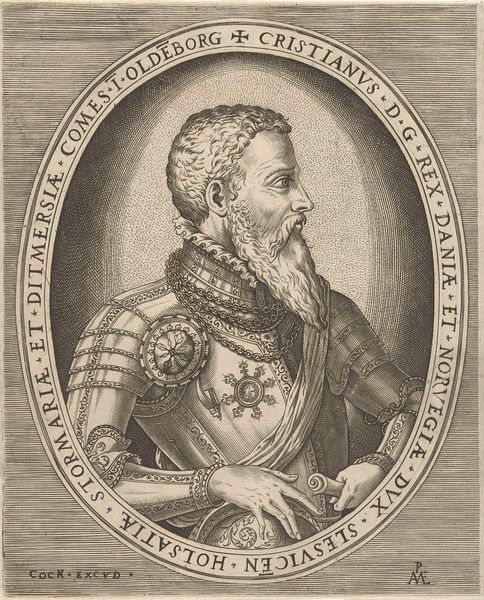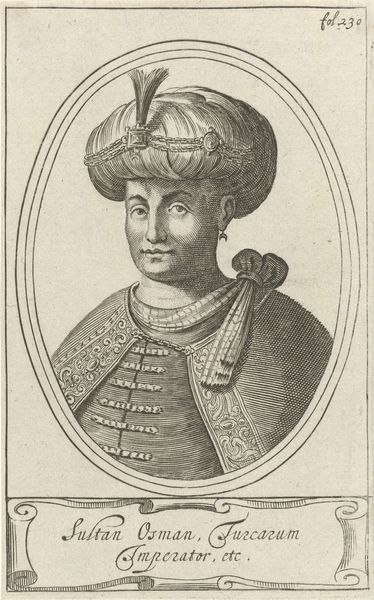
engraving
#
portrait
#
old engraving style
#
figuration
#
11_renaissance
#
line
#
portrait drawing
#
northern-renaissance
#
engraving
Dimensions: height 112 mm, width 85 mm
Copyright: Rijks Museum: Open Domain
Curator: This is an engraving from 1573 by Paulus van Wtewael. It's called "Portret van een onbekende man, een gevederde muts op het hoofd," or "Portrait of an unknown man with a feathered hat." Editor: There's something undeniably stiff about the figure; perhaps the ruff encircling his neck constricts not only him, but our gaze as well? It’s as though it functions as a barrier, marking the sitter as separate and, undeniably, of higher status. Curator: Precisely! The rigid formality speaks volumes about the social hierarchy of the time. This wasn't just any man; the feathered hat and elaborate clothing were potent symbols of wealth and authority. The portrait itself was likely commissioned to project a very specific image. Editor: I’m also fascinated by how the lines create depth, a network really. Do you think it emphasizes not just texture but maybe status in some way? Curator: Undoubtedly. The precise lines are hallmarks of Northern Renaissance engraving; Wtewael masterfully uses them to define the texture of the fabrics, to accentuate the details of the man's face, and ultimately, to convey a sense of precision and control—qualities befitting someone in a position of power. Editor: It strikes me, too, how contained the subject is within this oval format. It's like trapping a moment. Does the oval help focus the narrative on the individual's power? Curator: Absolutely, think about this from a sociological perspective. Placing the figure within that confined oval frame accentuates the portrait's role as a tool for preserving and disseminating his image—effectively immortalizing him, albeit in a very controlled and presentational way. It also isolates him. Separates him. Editor: Considering that and looking at this piece purely formally, what's captured in monochrome speaks loudly of how this man perceived his position, or wished to project it to others. And in the here and now. Thanks, as ever, for widening my perception of this print. Curator: And thank you, again, for lending your astute and sensitive gaze. It's through these kinds of dialogues that art can really come alive.
Comments
No comments
Be the first to comment and join the conversation on the ultimate creative platform.
